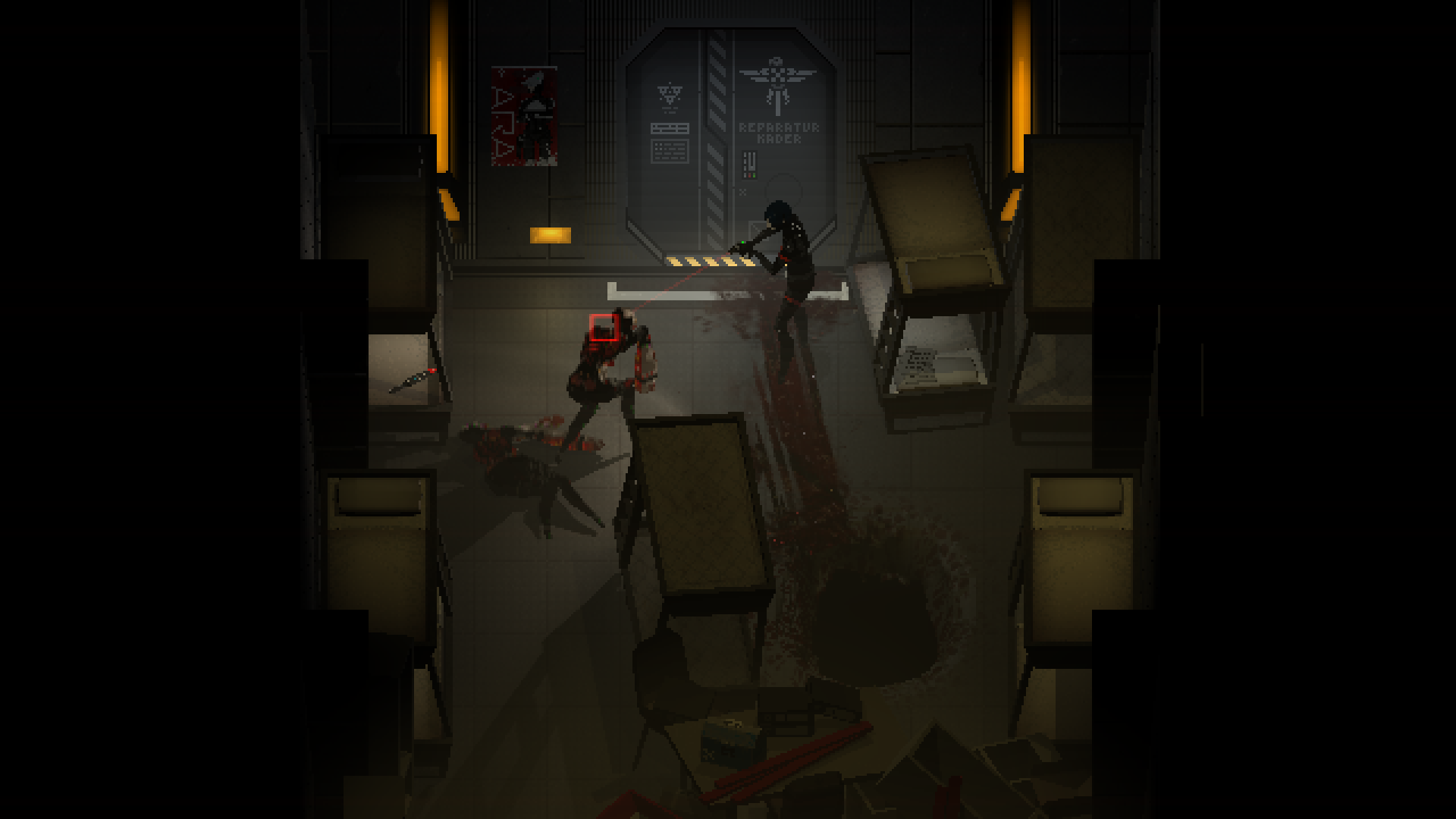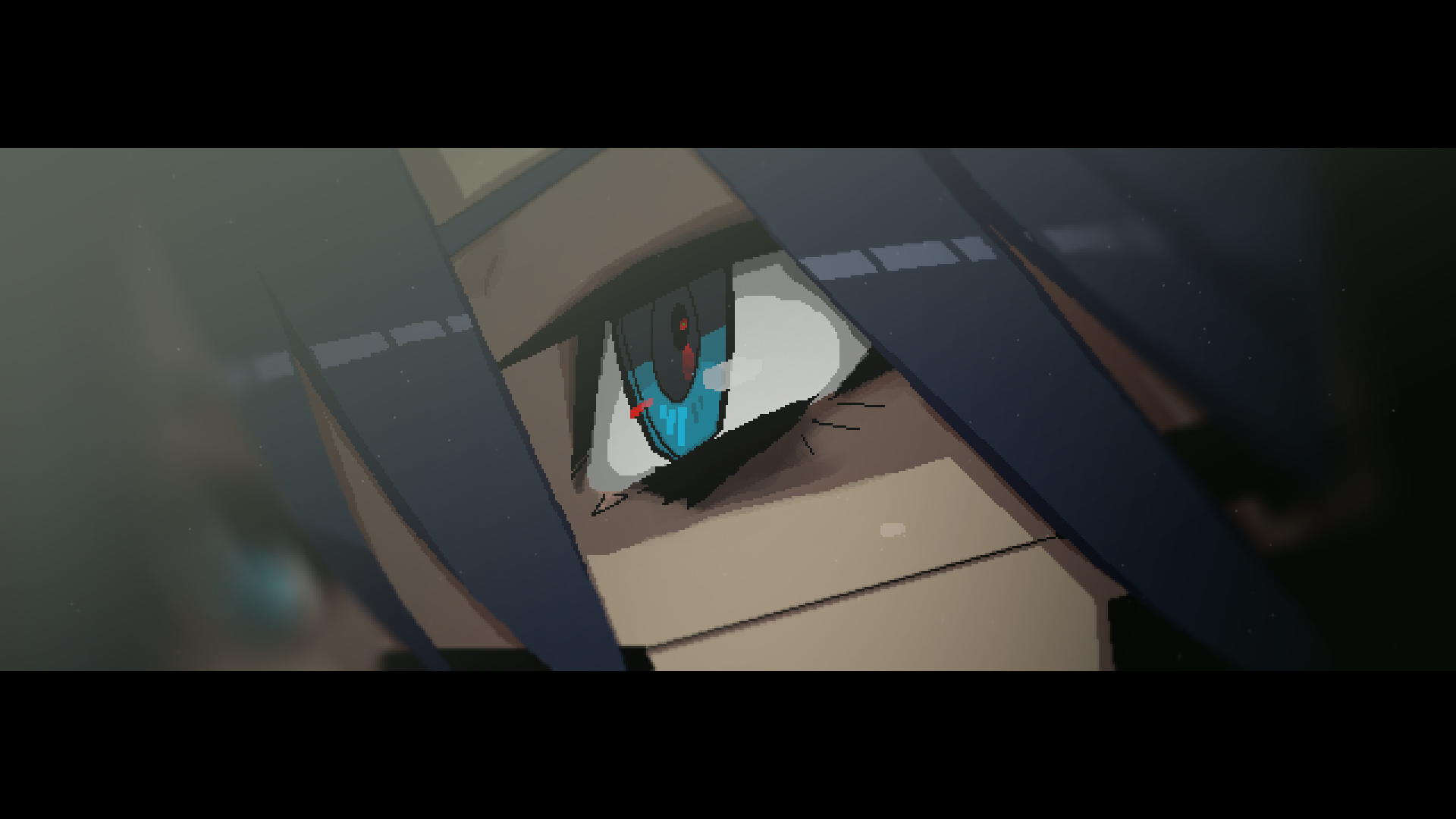Wake up, the game tells you as a means of a preamble as you boot up Signalis for the first time.
Elster, protagonist and synthetic humanoid technician, opens her eyes as she rises from stasis, and it’s for you to fumble through the darkness of a ruined ship to see where you are and why. Things quickly go from bad to worse as she navigates this familiar, uncanny dystopian hellscape, where time may or may not be linear, and the line between dream and reality is blurred from the off.
Fans of classic horror (and/or the first season of True Detective) will no doubt clock the copy of Robert W. Chambers The King in Yellow, which makes an appearance as you take your first steps into the facility following Signalis‘ brief prologue. This real-world bit of intertextuality plays well with the game’s themes of loss, memory, madness, and the uncanny. Literature buffs, too, will surely take great joy in spotting the myriad ways that references to the work surface throughout Signalis.
Each of the game’s main areas plays out in the quintessential, old-school survival horror mode of managing your limited offensive and healing resources as you navigate a labyrinth full of interconnected puzzles to continue. Signalis really nails the tactile feel of its early survival horror influences, too.
Items can be turned over in your hands to find further clues, and many of the game’s puzzles are environmental – finding valves and fuses to open passageways leading to more puzzles. It all feels like a big, horrifying escape room, much in the way Resident Evil 1 accomplishes the same.
And most of the puzzles err on the right side of difficult, rewarding further exploration with key contextual information for things that don’t make immediate sense when first seen. Some even require note-taking (or screenshots, though the Xbox UI was the bane of my life for these) as you discover complex solutions to problems on the other side of the map. There are a few moments that do stray into the obtuse and almost Byzantine, though they are thankfully few.
You’ll constantly be wrestling with your restricted inventory, however; key items are not separated out from the pool and will take up one of your six precious slots when you leave a safe room with them. Later puzzles can require multiple solutions, forcing you into forgoing some healing items or extra ammo, which both succeeds in ramping up the tension and serves to infuriate a little. Though, it’s unlike, say, Resident Evil, where bigger items take up more room; your shotgun is, for the purposes of your inventory, the same size as a key, equipped or otherwise.
The influence of early classics like Silent Hill doesn’t end there. While Signalis mercifully has done away with the infamous tank control scheme, combat is a decidedly slow affair, with limited movement while aiming down sights and, no surprises, a scarcity of ammunition. The twist on this is that enemies do not necessarily remain dead unless you have the means to off them for good.
Some mid-game weapons introduce a strategic element to this, as you can choose a handful of monsters to permanently retire – though that choice can come with a cost. Are you better placed trying to clear a section entirely, making your safe rooms safer, or keeping the heavy hitters off the field permanently? What about the ammo that you don’t have room in your inventory to bring back – will the enemies stay down long enough for you to make a return trip to your storage?
Signalis really nails down the overall vibe of classic survival horror; it’s a vision of a promised future as seen from the tail end of the 90s. It’s a clear love letter to all things 32-bit, though brought kicking and screaming into the 21st century with some superb lighting effects and world design.
Artists 1000 Eyes and Cicada Sirens have also delivered one of the greatest soundtracks in recent memory. It swings between a minimalist beauty and being absolutely horrible in the best kind of way, and it deserves being listened to on the Signalis soundtrack Bandcamp page, even if you have no intention of playing the game.
Signalis Review — The Bottom Line
Pros
- Superb writing, pacing, and plot.
- Almost pitch-perfect entry into the PS1-era horror canon
- Broadly, the atmosphere, but specifically, that soundtrack.
Cons
- Some puzzles are a little too wonky.
- Very restrictive inventory capacity.
Signalis does a lot of heavy lifting, bringing 90’s genre tropes into the cold light of the present, and it does enough to modernize them to both feel contemporary and timeless, almost to the point that playing Signalis is analogous to how you remember such games as Resident Evil and Silent Hill. While the latter may have aged somewhat now, this is old-school survival horror rendered preeminently.
While it’d be remiss of me to discuss some of the specifics that truly elevate Signalis, particularly in terms of the story and its experimental delivery, you can believe that developers rose-engine have made good on their promise. They’ve delivered a top-tier game that marries cosmic horror with altogether more grounded points of conflict. Signalis is a vital experience for anyone who fondly remembers being terrified of vague pixel arrangements of early survival horror games.
[Note: The GamePass version of Signalis was used for this review.]









Published: Nov 8, 2022 02:27 pm